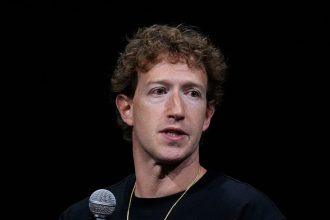This is the published version of Forbes’ Future of Work newsletter, which offers the latest news for chief human resources officers and other talent managers on disruptive technologies, managing the workforce and trends in the remote work debate. Click here to get it delivered to your inbox every Friday!
Years ago, when I worked for a weekly business news magazine, we had two “dead weeks” each year when we didn’t publish an issue: A week in August after we printed a summer double issue and most of the staff got out of New York, and the week between Christmas and New Year’s, when everyone took off for the holidays. They weren’t vacation days, strictly speaking, but it was quiet. You had time to think. Step away for longer lunches. Come in late and work on a project you’d been trying to find time to start.
As the pandemic launched a newfound focus on mental health in the workplace, it felt like something like that was coming back. A number of companies added mental health days or summer Fridays. Company-wide “shutdowns” became a thing, as employers recognized that time off was respected more when everyone else was doing it too. “Self-care weeks” were launched to give people extra time off.
Despite the downturn, some companies are continuing the practice. HubSpot has a “global week of rest” this week. PwC is calling this week a “firmwide shutdown.” Many of us actually working this week—with July 4th falling halfway through—can feel the difference. There are fewer emails in the inbox. The calendar is less full. Slack is quieter.
But the last few months have been a reminder that extra time off isn’t a permanent thing, especially in a downturn. Salesforce ended its “well-being days”—essentially an extra day off per month—in January, the Wall Street Journal reported. Last June, according to a report by the Verge, CEO Mark Zuckerberg said in an employee Q&A, the company’s extra “Meta Days” would be canceled after last year.
Will firm-wide shutdowns remain part of the slate of benefits in the future of work? Or will the current economy and “perk-cession” end the practice? This summer may offer some clues. Meanwhile, check out our latest rundown of news on hybrid work, the job market and the concept of “resenteeism.” And on’t miss my interview with Walmart’s Chief People Officer, Donna Morris, who chatted with Forbes about AI, new mental health benefits, the future of HR—and why cover letters don’t matter like they once did. Hope it’s a great weekend.
Jena McGregor, Senior Editor, Leadership Strategy & Careers | @jenamcgregor
HUMAN CAPITAL
Job cuts hit a seven-month low in June, but that may be just a sign summer is here—a slowdown on layoffs is typical of the season—rather than that the economy is improving. Our tracker, which shows nearly 194,000 people have been laid off this year, is following the latest cuts; Fed officials still foresee a recession this year, amid an economy full of contradictions.
“Resenteeism” is the latest corporate buzzword to follow “quiet quitting” and “rage applying.” (It describes the state of disliking your job but not quitting it due to fears about the market, writes senior contributor Mark Murphy, and if that sounds like an old phenomenon, it is.
HYBRID WORK
Remote work keeps getting debated, as bosses want to call people back to the office and workplaces settle in to a hybrid reality. It seems to impact everything—from how workers are offboarded to seating arrangements to the makeup of U.S. suburbs and cities—leading to new technology and changes in what draws people back to physical spaces.
There’s plenty of debate over the real upsides—and pitfalls—of remote work. One thing that does seem clear: Workers say hybrid work is better for their mental health. Data on productivity, meanwhile, is far less clear, and needs new ways of measurement in a hybrid world, argues contributor Gleb Tsipursky.
POLICY & PRACTICE
The Pregnant Workers Fairness Act (PWFA) took effect last week, expanding protections for working mothers and requiring employers with 15 or more employees to make reasonable accommodations when workers need them because of pregnancy, childbirth, or related medical conditions. Contributor Holly Corbett shares what you need to know.
WHAT’S NEXT: WALMART CHIEF PEOPLE OFFICER DONNA MORRIS
Walmart Executive Vice President and Chief People Officer Donna Morris, who leads human resources at the largest U.S. based-global employer, chatted with Forbes about AI, mental health benefits, and what’s next on her agenda. The excerpts below from our conversation have been lightly edited for length and clarity.
You recently wrote on LinkedIn about new AI capabilities you’re building into HR. What can you tell us about that?
Earlier this year, we got really excited about the potential for the people function to be a bit of a pace car for change. As you probably know, often the [H.R.] function is thought of as back-end—sometimes even reactive, administrative. So we went on a sprint to learn more about GenAI and frankly, to start to actively work with our tech partners.
Our Me@Campus app aggregates approximately 16 different point solutions [applications like Workday, Concur, Fidelity, etc.] into one front end. … That was already in development. But what we’re really excited about this summer is providing the opportunity to really have [generative AI] capabilities … be exposed through that Me@ application. For instance, if I want to draft a job posting or an email to a colleague that has a bunch of facts, I could—within the Me@ app—really leverage that GenAI capability without it going outside the enterprise. It’s contained within Walmart. We’re not sharing our data externally.
You mentioned in your post it might be able to do transactions, such as an employee changing their 401k contribution with a simple prompt. Is that something you’re rolling out too?
That’s what we’re working on right now. There’s more complexities to that. If not trained effectively, you don’t want [the AI providing] misinformation to our associates. Our first instance will be based on our benefits information. If I’ve had a baby, for instance, and I want to add a dependent, I’ve got to go to a site. I’ve got to navigate all kinds of documents. I’ve got to navigate all kinds of forms. What we’re working to build is the ability, right within the Me@ app, to add a new dependent, to immediately bring up all the transactional steps.
Some companies have started adding policies that ban the use of external GenAI. What has been your approach?
Probably late May, we introduced what we’re calling a “playground.” We’re finding that mainly it’s being used by technologists. … We are not wanting confidential or material Walmart information to go outside the company. We’ve always felt that way. So it’s not a big change to our policy.
It’s not like people aren’t setting up and doing quick chatGPT drafts about, say, what’s the best orientation program? A lot of those are harmless. It’s when you start to actually add on your own data that it becomes a bit murky. And that’s where we want to have our own capabilities.
Would you care if someone wrote their cover letter using AI?
I hate to say it, we’re really not interested in people’s cover letters anymore. I think what we’re probably going to see is some people will leverage it to have a sexier—if I can use that term—bio on their LinkedIn profile. Great! If that helps them? Fabulous. But at the end of the day, the rubber hits the road in people’s ability to actually demonstrate their performance consistent with what they say they’re capable of doing.
You’ve recently introduced a host of new mental health benefits.
We doubled the number of counseling sessions available from 10 to 20. We leaned into a partnership with a company called AiRCare that actually uses A.I.—not generative A.I., but A.I.—to take a number of data points to predict associates that might be needing more assistance, and then do proactive calls.
They look at big stress factors. Somebody is in a new job. They were married, now they’re single or they divorce, or there’s been a change to the size of the family unit. … While they don’t know the type of medications, they can see how many times people are actually visiting or getting their insurance submitted. If they see that somebody has a lot of claim history, they’ve had a lot of personal changes, all of that is predictive. Once again, that’s a third party. That’s not Walmart doing it. We directly outsource that to a third party.
Outside of AI and the debate about hybrid work, what is your biggest HR priority going forward?
If I look out into the future for us, we’re going to stay focused on those four swim lanes [digital, growth and development, belonging, well-being]. … I think the work of H.R./people is only going to become more strategic because we’re going to be able to focus on organizational design, talent management, really driving growth strategies because we’re going to have new capabilities that we didn’t have.
At some companies, AI is really hitting H.R. jobs hard. How do you think it will change jobs in the HR function over time?
I think it’s going to augment work across the board. I think it’s going to require all associates who are part of the people function to be digitally oriented.
But more people, or less?
I think it’ll be flat. I wouldn’t say that it’s going to go down. But I also think that as we grow in scale, we’re not going to continue to need this notion of “my company is growing, that means H.R. has to continue to grow.” No. I think you’re going to start seeing efficiencies. But I think the people/H.R. function is likely the same as a lot of professional functions. A lot of them will be able to rationalize how they can do more with the same. … [But] I think the skills and capabilities need to continue to be very people-oriented. What’s distinctly human—interpersonal skills, communication skills, problem skills, judgment skills—those will all be reinforced that they’re essential to being really successful.
FACTS AND COMMENTS
Meta introduced Threads, a new app that creates a rival to Elon Musk-owned Twitter, this week. There are already legal threats, according to media reports, with Twitter attorney Alex Spiro accusing Meta and CEO Mark Zuckerberg of hiring dozens of former Twitter employees to create Threads “with the specific intent” of using insider information to develop it.
- In the letter, as reported by Semafor, Spiro suggested many of the Meta-hired former employees “continue to have access to Twitter’s trade secrets” and have “improperly retained Twitter documents and electronic devices.” A communications director at Meta posted that “no one on the Threads engineering team is a former Twitter employee — that’s just not a thing.”
- 30 million: The number of sign-ups Zuckerberg said the new app had drawn as of Thursday morning, July 6.
- $900 billion: How high CFRA analyst Angelo Zino thinks Meta’s valuation could soar, in part due to expected success for Threads.
VIDEO
UPS Workers Could Go On Strike As Negotiations Stall
Watch
STRATEGIES + ADVICE
Successful hybrid work requires training for proximity bias. Here’s what else should be done.
Older, more experienced employees can be the most productive—if workplaces keep them.
What to watch for when working with consultants.
QUIZ
An Australian-based infrastructure company recently filed a lawsuit over more than $600,000 in allegedly unpaid bills for office work. Which high-profile tech company is the target?
- TikTok
- Amazon
- Salesforce
Check if you got it right here.
Read the full article here





